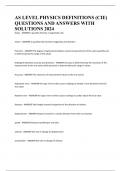Summary
Strategy Implementation - summary of the lectures and all articles - by Michel Dagli
- Course
- Institution
All in one summary - this is a comprehensive summary of lectures and articles. Articles and lessons are in the correct order. See the table of contents for more info.
[Show more]












